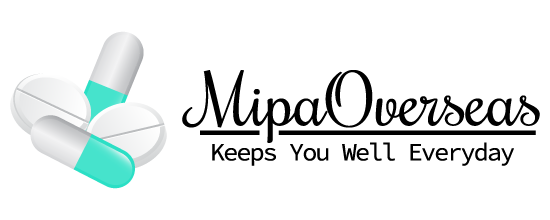What is Amoxycillin & Cloxacillin Capsules ?
Amoxicillin and cloxacillin are both antibiotics commonly used to treat bacterial infections. They belong to a class of antibiotics known as penicillins, specifically the beta-lactam antibiotics.
- Amoxicillin: Amoxicillin is a broad-spectrum antibiotic that is effective against a wide range of bacteria. It works by inhibiting the formation of the bacterial cell wall, leading to the death of the bacteria. It is often used to treat respiratory tract infections, urinary tract infections, skin and soft tissue infections, and other bacterial infections.
- Cloxacillin: Cloxacillin is a narrow-spectrum antibiotic, primarily effective against certain types of bacteria, specifically those that produce an enzyme called beta-lactamase, which can destroy some antibiotics like amoxicillin. Cloxacillin is often used to treat infections caused by beta-lactamase-producing bacteria. It is commonly used to treat skin and soft tissue infections.
Amoxycillin & Cloxacillin Capsules Use
- Amoxicillin: Amoxicillin is an antibiotic used to treat a wide range of bacterial infections. It works by stopping the growth of bacteria. It is commonly used to treat respiratory tract infections, ear infections, urinary tract infections, skin and soft tissue infections, and other types of infections caused by susceptible bacteria.
- Cloxacillin: Cloxacillin is another antibiotic from the penicillin group, specifically a beta-lactamase-resistant penicillin. It is effective against certain types of bacteria that produce an enzyme called beta-lactamase, which makes them resistant to many other penicillin antibiotics. Cloxacillin is often used to treat skin and soft tissue infections, including those caused by methicillin-resistant Staphylococcus aureus (MRSA).
Combination use (Amoxicillin and Cloxacillin): Sometimes, amoxicillin and cloxacillin are combined in a single capsule to provide a broader spectrum of antibacterial activity. This combination is used to treat infections caused by a variety of susceptible bacteria, especially in situations where both types of antibiotics are needed to effectively combat the infection.
Amoxycillin & Cloxacillin Capsules – Mechanism of Action and Pharmacology
Mechanism of Action:
- Amoxicillin:
- Inhibition of Cell Wall Synthesis: Amoxicillin works by interfering with the synthesis of the bacterial cell wall, a crucial component for bacterial growth and survival. It inhibits the transpeptidase enzyme, which is essential for cross-linking peptidoglycans in the bacterial cell wall. As a result, the bacterial cell wall becomes weak and unable to maintain its structural integrity, leading to cell lysis and bacterial death.
- Cloxacillin:
- Inhibition of Cell Wall Synthesis: Similar to amoxicillin, cloxacillin is a beta-lactam antibiotic that inhibits the synthesis of bacterial cell walls. It achieves this by binding to and inhibiting penicillin-binding proteins (PBPs) on the bacterial cell membrane. PBPs are enzymes involved in the final stages of bacterial cell wall synthesis. Inhibition of PBPs disrupts cell wall formation, weakens the bacterial cell wall, and ultimately causes cell death.
Pharmacology:
- Absorption and Distribution:
- Both amoxicillin and cloxacillin are well-absorbed after oral administration. They reach therapeutic concentrations in various tissues and body fluids, making them effective against systemic bacterial infections.
- Metabolism and Elimination:
- Amoxicillin is primarily excreted unchanged in the urine via the kidneys. The elimination half-life is relatively short, typically around 1-1.3 hours in adults with normal renal function.
- Cloxacillin is also primarily excreted through the kidneys, mainly as the unchanged drug. The elimination half-life is about 30-60 minutes.
Amoxycillin & Cloxacillin Capsules – Side-effects
- Here are some common side effects associated with amoxicillin and cloxacillin capsules:
- Digestive System Upset:
- Nausea
- Vomiting
- Diarrhea
- Abdominal pain or discomfort
- Allergic Reactions:
- Rash
- Itching
- Swelling of the face, lips, or tongue
- Difficulty breathing or shortness of breath
- Severe skin reactions (e.g., Stevens-Johnson syndrome)
- Hypersensitivity Reactions:
- Fever
- Joint pain
- Muscle pain
- Eosinophilia (an increase in a type of white blood cell)
- Liver Function Changes:
- Elevated liver enzymes
- Jaundice (yellowing of the skin or eyes)
- Blood Disorders:
- Decreased white blood cell count
- Decreased platelet count
- Clostridium difficile Infection:
- Prolonged use of antibiotics can disrupt normal gut bacteria and increase the risk of a bacterial infection called Clostridium difficile, which can cause severe diarrhea and inflammation of the colon.
